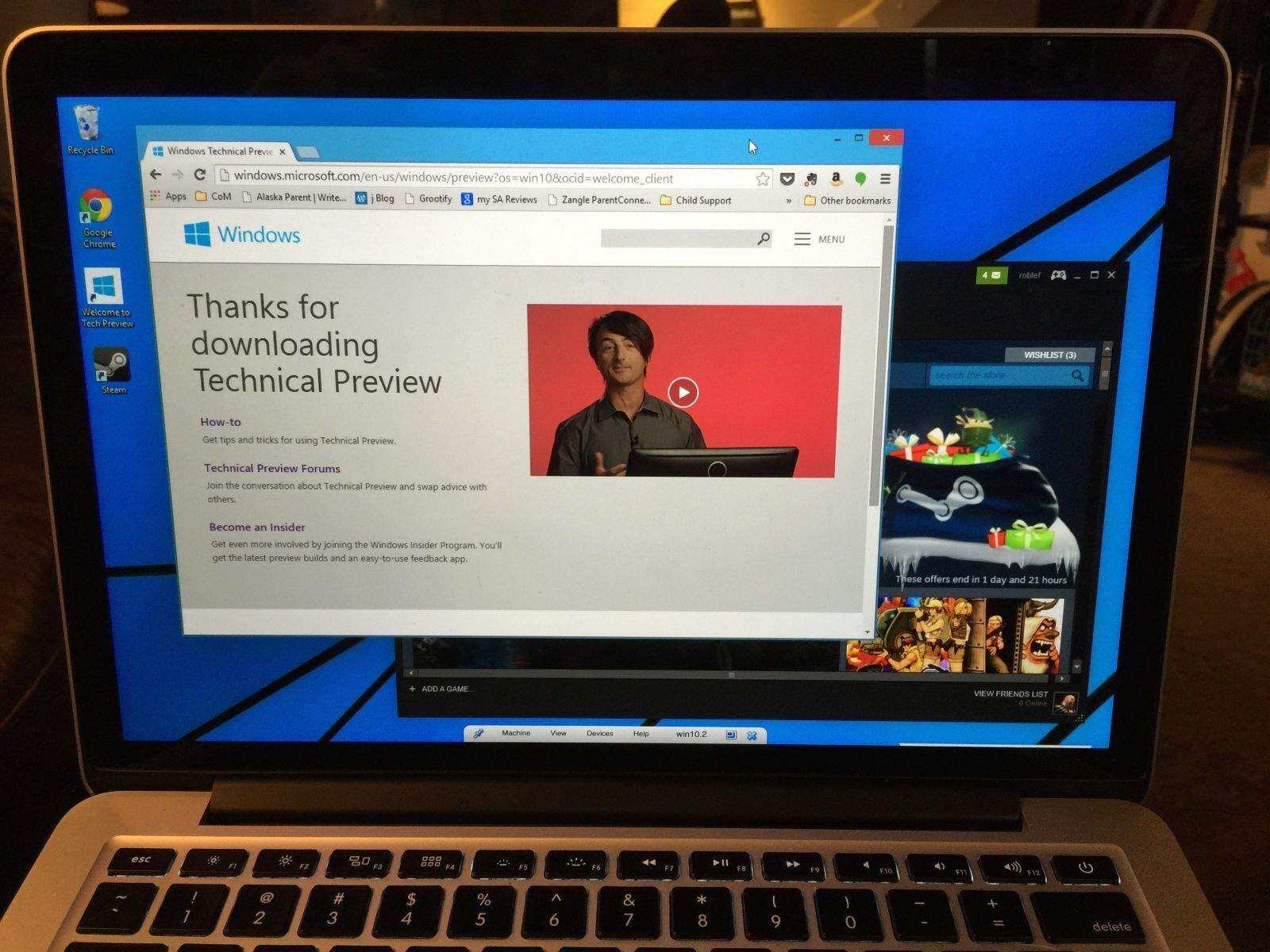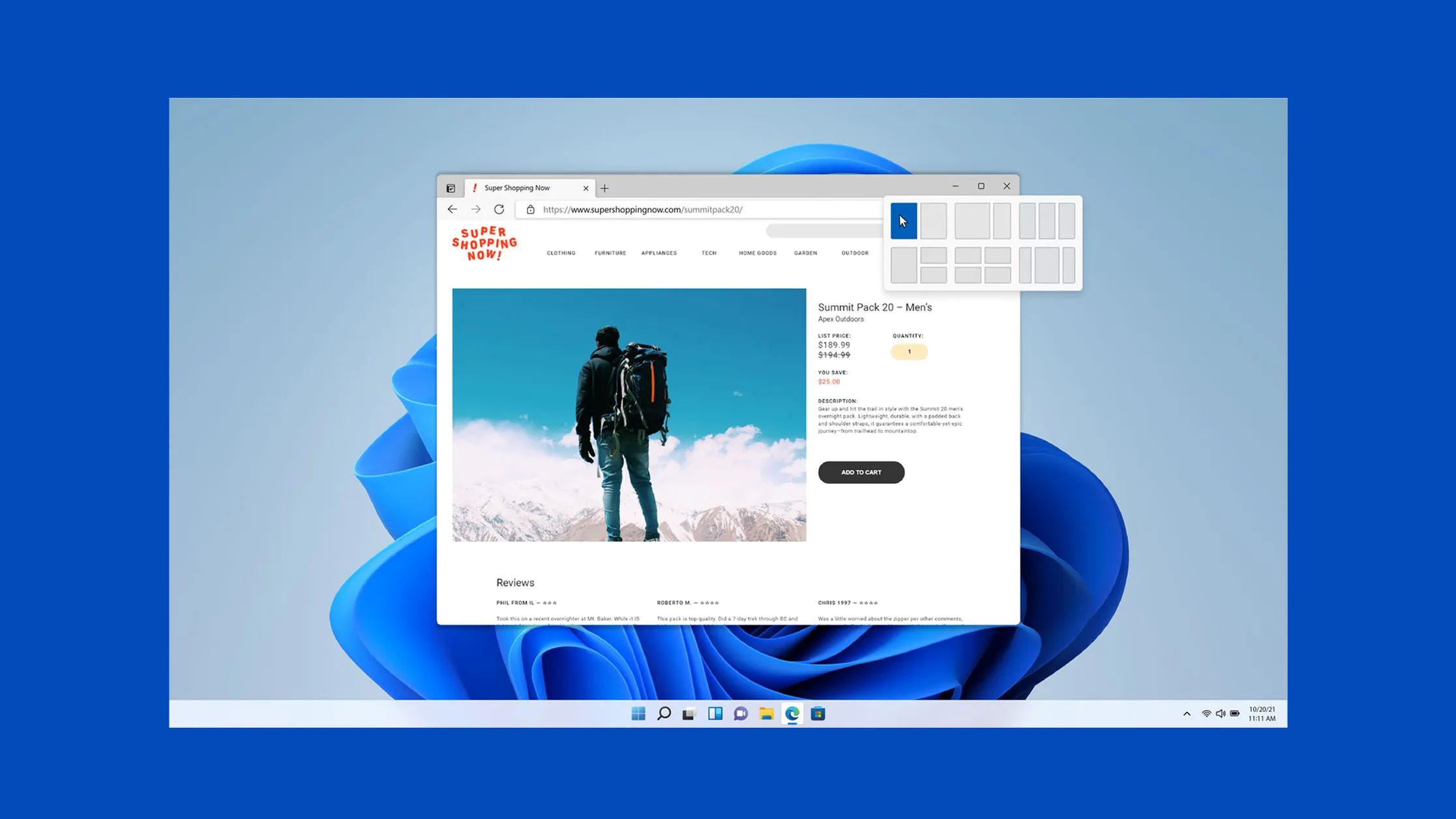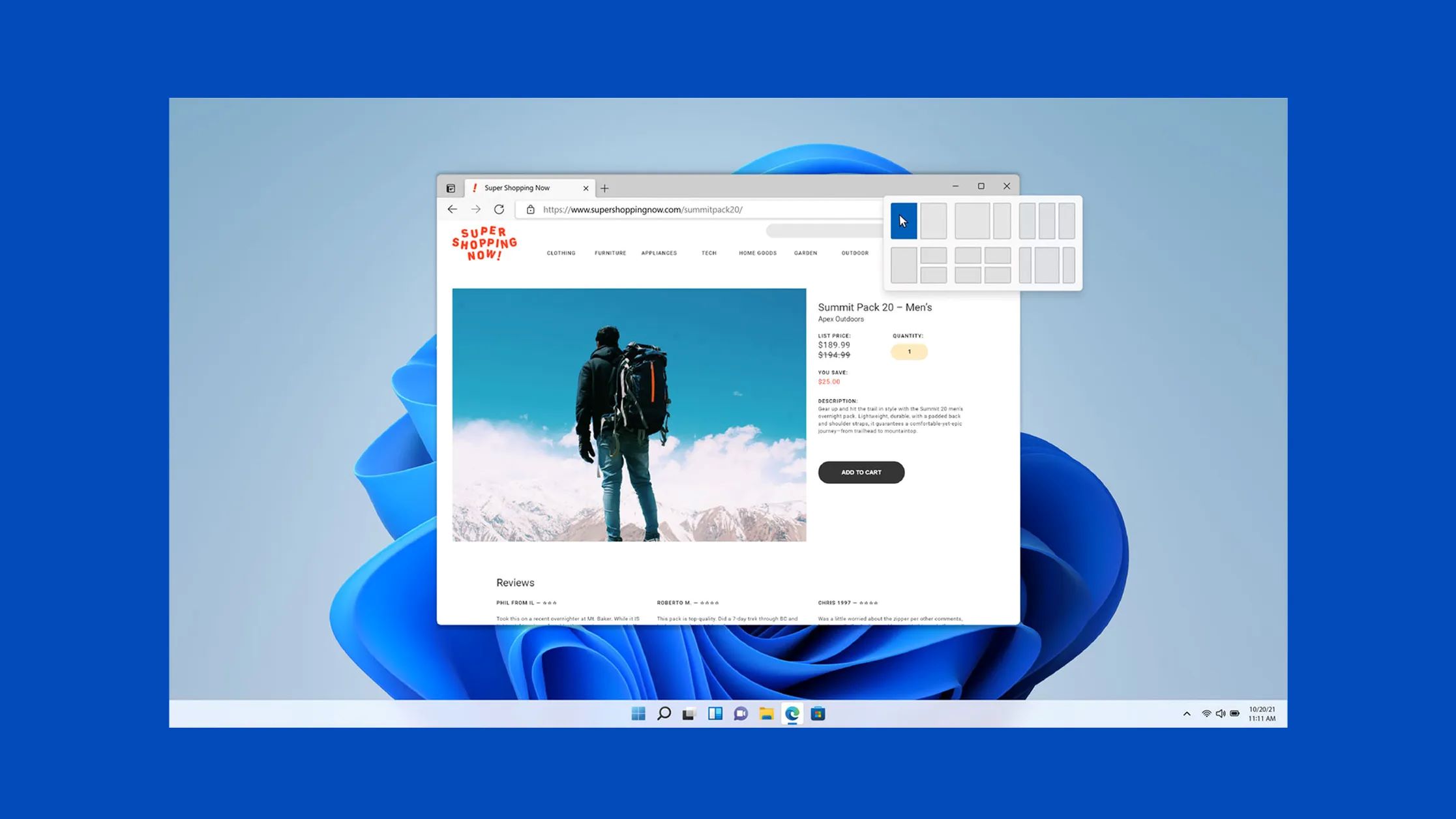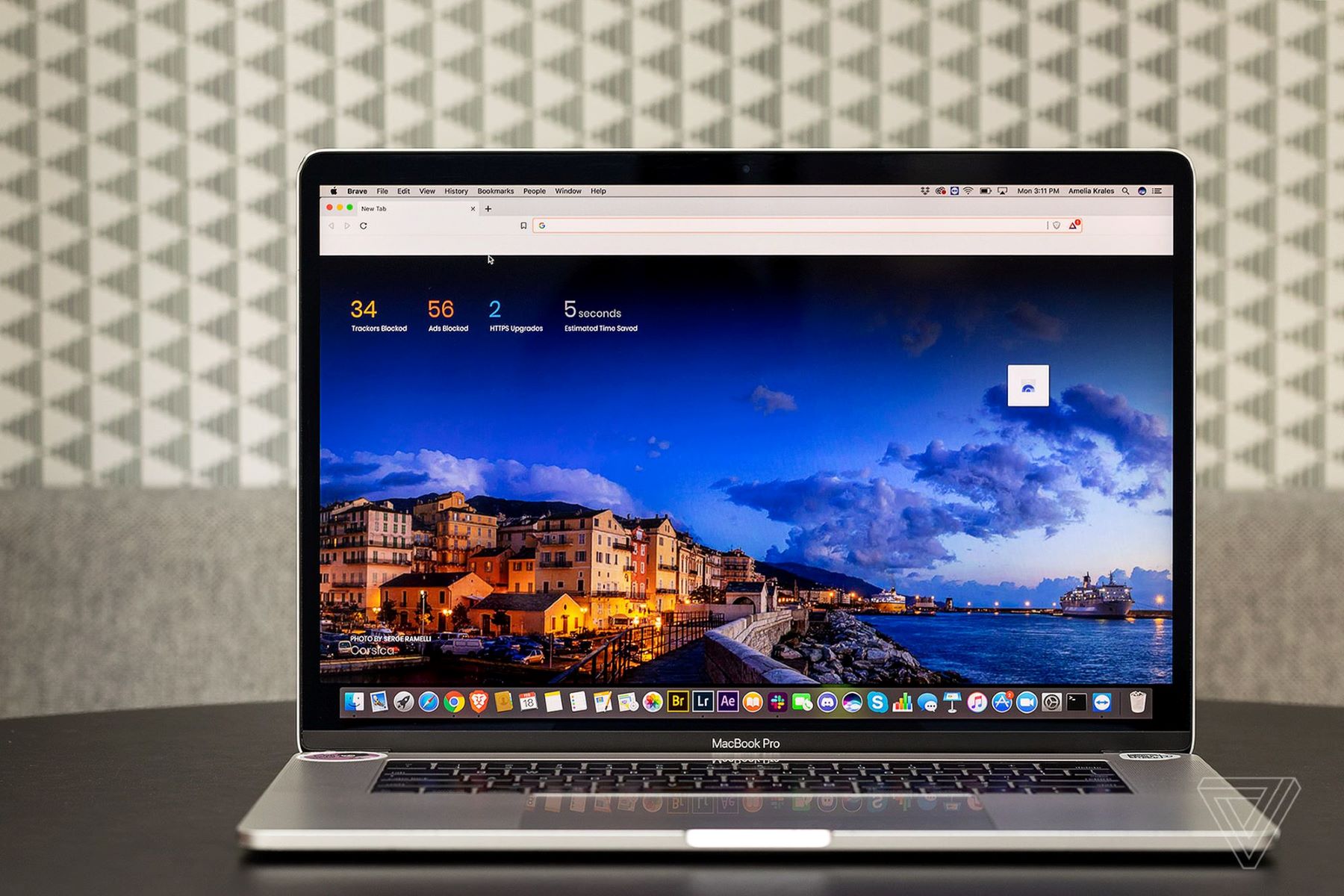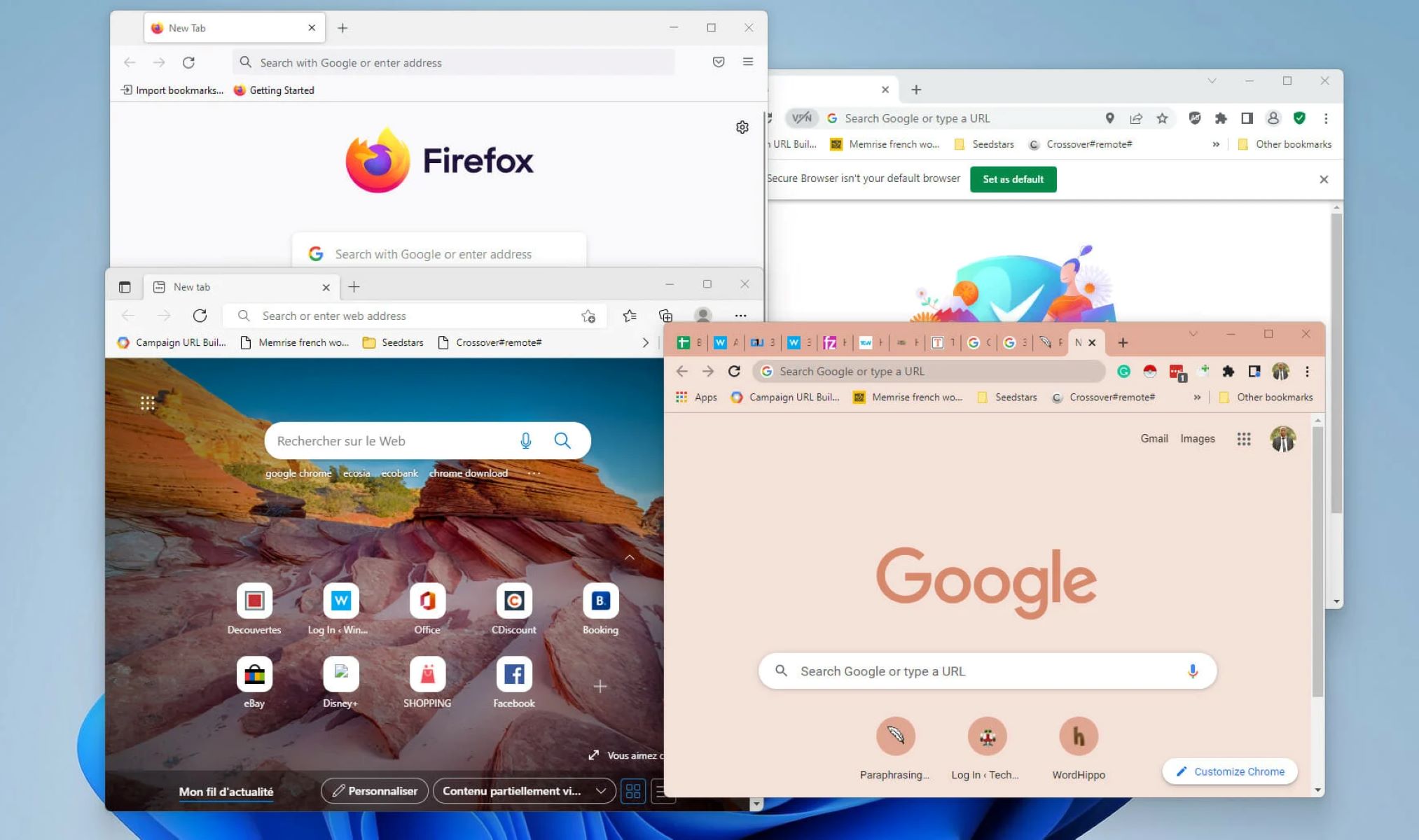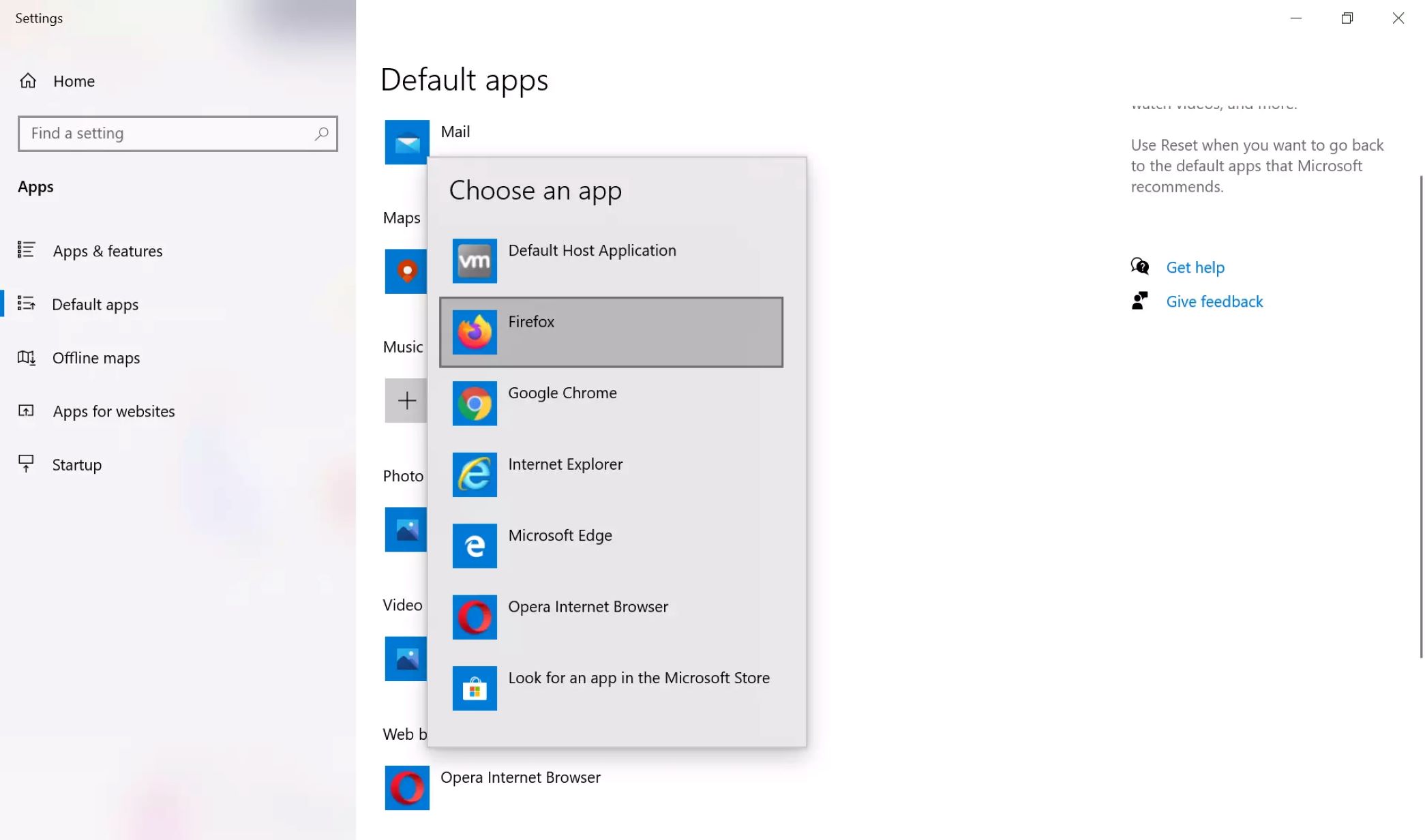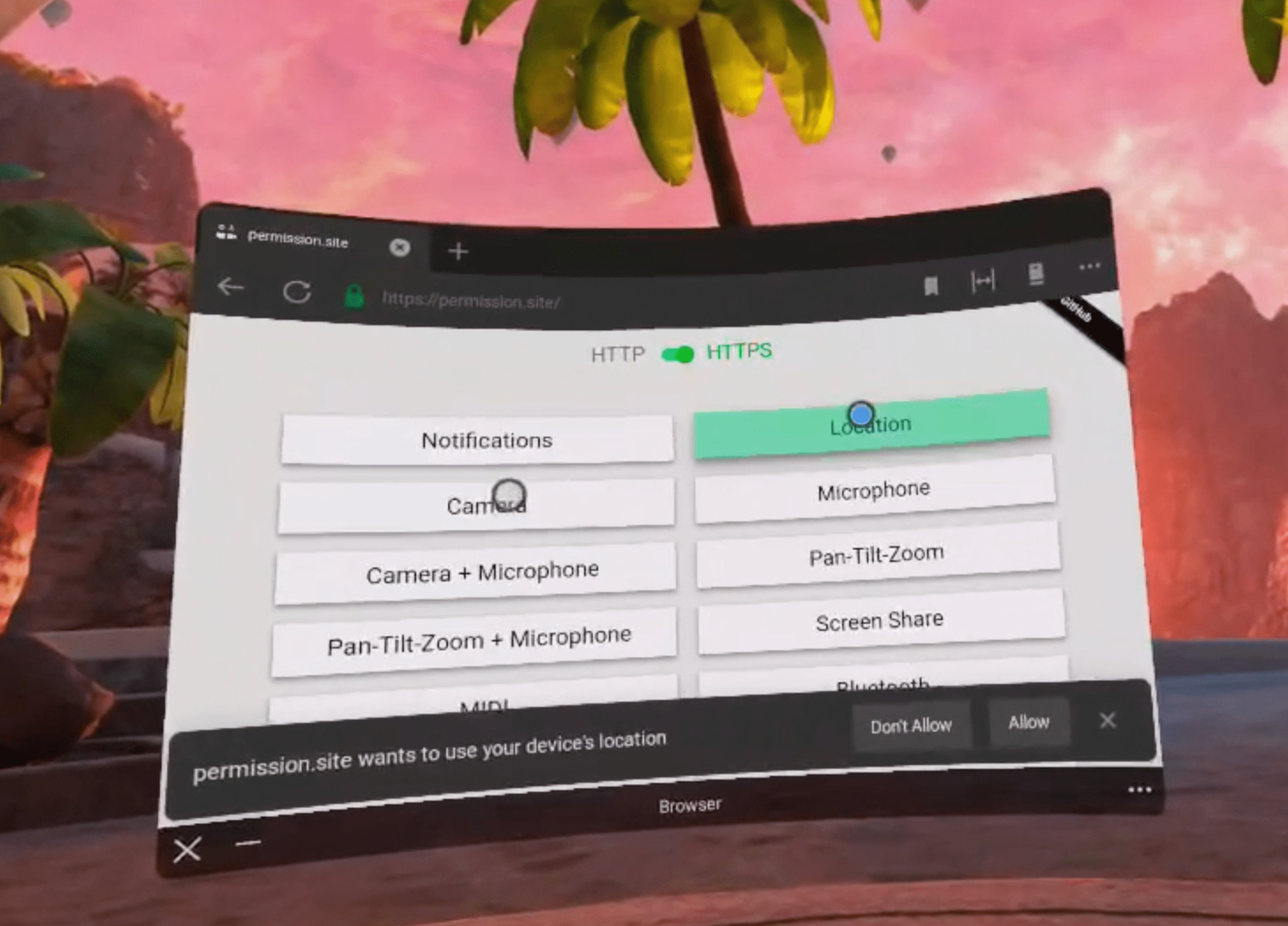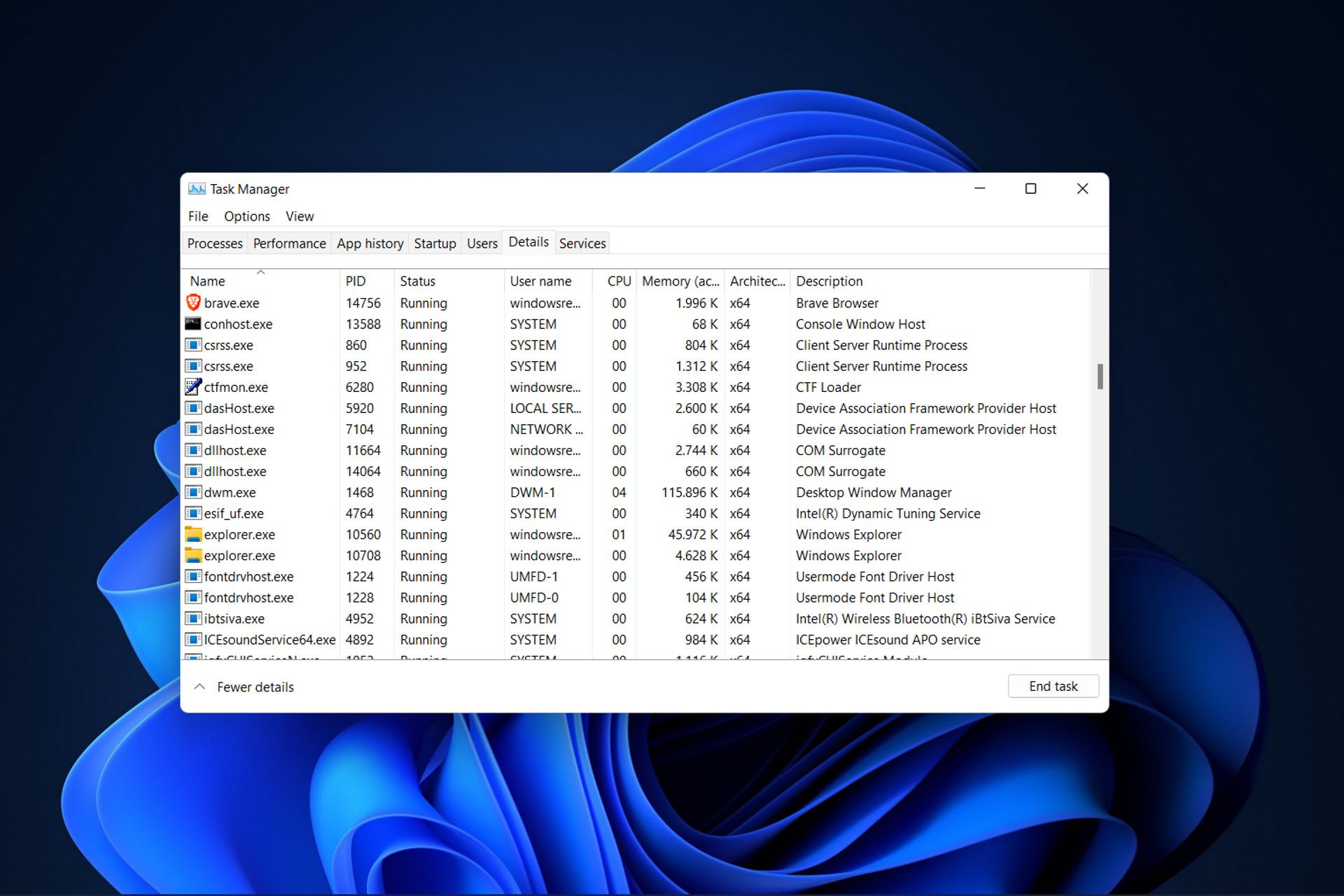Introduction
When you open your favorite website, do you ever wonder about the digital magic that brings it to life on your screen? It all begins with a fundamental element of web browsing: the browser window. This virtual portal serves as your gateway to the boundless expanse of the internet, allowing you to explore, connect, and discover a wealth of information with just a few clicks.
The browser window is more than just a frame for displaying web content; it's a dynamic interface that empowers users to navigate the online realm with ease and efficiency. Understanding the intricacies of this essential tool can enhance your browsing experience and unlock a world of possibilities at your fingertips.
In the following sections, we'll delve into the definition, components, functions, and common features of a browser window, shedding light on its pivotal role in shaping the way we interact with the digital landscape. So, let's embark on a journey to unravel the inner workings of the browser window and gain a deeper appreciation for the technology that fuels our online adventures.
Definition of a Browser Window
At its core, a browser window is the graphical interface through which users access and interact with the internet. It serves as a virtual frame that encapsulates web content, providing a visual canvas for displaying websites, web applications, and multimedia elements. Essentially, the browser window acts as a portal, bridging the gap between users and the vast digital landscape of the World Wide Web.
When you launch a web browser, such as Google Chrome, Mozilla Firefox, or Microsoft Edge, a window materializes on your screen, ready to transport you to your desired online destinations. This window is the gateway to a multitude of online experiences, enabling seamless navigation, content consumption, and interaction with web-based resources.
The browser window encompasses various elements, including the address bar, navigation buttons, tabs, and a viewing area where web content is rendered. It provides a user-friendly interface that empowers individuals to explore websites, conduct searches, access online services, and engage with a diverse array of digital content.
In essence, the browser window serves as a digital window to the world, offering a glimpse into the ever-expanding realm of cyberspace. It encapsulates the essence of connectivity, enabling users to traverse virtual landscapes, communicate across distances, and access a wealth of information with unparalleled convenience.
As technology continues to evolve, the browser window remains a foundational element of the digital experience, adapting to accommodate new features, enhanced security measures, and innovative browsing capabilities. Its significance in shaping the way we interact with the internet underscores its status as a cornerstone of modern digital communication and exploration.
In summary, the browser window is the virtual stage upon which the internet unfolds, providing users with a versatile platform for accessing, exploring, and engaging with the vast array of online resources that define the digital age.
Components of a Browser Window
The browser window comprises several key components that collectively facilitate seamless navigation, content interaction, and user control. Understanding these elements is essential for harnessing the full potential of the browsing experience. Let's explore the fundamental components that shape the functionality and visual appeal of the browser window:
-
Address Bar: Positioned prominently at the top of the window, the address bar serves as a gateway to the web. It allows users to input website addresses, search queries, or uniform resource locators (URLs) to access specific web pages or initiate online searches. Additionally, modern browsers often integrate the address bar with search functionality, enabling users to perform web searches directly from this central command hub.
-
Navigation Buttons: These familiar icons, including back, forward, refresh, and stop, empower users to maneuver through their browsing history, revisit previous pages, reload content, and halt page loading processes. These intuitive controls enhance user agency, allowing for effortless traversal through web content and interactions.
-
Tabs: A hallmark feature of contemporary browsers, tabs enable users to open multiple web pages within a single window, each occupying its own distinct tab. This functionality promotes multitasking and efficient organization, as users can seamlessly switch between different web pages without cluttering their interface with numerous open windows.
-
Viewing Area: At the heart of the browser window lies the viewing area, where web content is rendered and displayed. This expansive canvas showcases websites, multimedia elements, and interactive applications, providing users with a visual gateway to the digital realm. The viewing area is the focal point of the browsing experience, serving as the canvas upon which the internet's diverse offerings come to life.
-
Menu Bar and Toolbars: These elements house a plethora of features and options, ranging from browser settings and customization tools to extensions and add-ons. The menu bar typically contains dropdown menus that grant access to various browser functions, while toolbars offer quick access to frequently used commands and utilities, such as bookmark management, print options, and extension controls.
-
Status Bar: Situated at the bottom of the window, the status bar provides valuable feedback and information regarding page loading progress, link destinations, and security indicators. It offers insights into the underlying processes that govern web interactions, enhancing transparency and user awareness.
By comprehending the roles and functionalities of these components, users can harness the full potential of the browser window, optimizing their browsing experiences and engaging with the internet in a more informed and empowered manner.
Functions of a Browser Window
The browser window serves as a multifaceted platform that fulfills a spectrum of essential functions, empowering users to navigate the internet, interact with web content, and customize their browsing experiences. Understanding the diverse roles performed by the browser window sheds light on its pivotal significance in shaping the digital landscape. Let's explore the fundamental functions that define the browser window's dynamic capabilities:
-
Web Navigation: At its core, the browser window functions as a virtual compass, guiding users through the intricate web of interconnected pages and online resources. Through the address bar and navigation buttons, users can traverse the internet with ease, accessing specific websites, initiating searches, and retracing their digital footsteps. This navigation prowess enables seamless exploration of diverse web content, fostering a sense of discovery and connectivity.
-
Content Rendering: The browser window excels in rendering web content with precision and clarity, presenting text, images, videos, and interactive elements in a visually appealing manner. By leveraging advanced rendering engines, browsers transform raw web data into cohesive, immersive experiences within the viewing area. This function is fundamental to delivering a rich and engaging browsing experience, allowing users to consume and interact with diverse forms of digital content.
-
Tab Management: Tabs represent a cornerstone of efficient multitasking within the browser window. By enabling users to open multiple web pages in separate tabs, the browser window facilitates seamless organization and quick access to diverse online resources. This function empowers users to engage with multiple websites simultaneously, streamlining their browsing activities and enhancing productivity.
-
Customization and Control: The browser window offers a range of customization options and user controls, allowing individuals to tailor their browsing environments to suit their preferences. From managing bookmarks and extensions to adjusting privacy settings and interface themes, the browser window empowers users to personalize their digital experiences. This function fosters a sense of agency and adaptability, enabling users to mold their browsing environments to align with their unique needs and preferences.
-
Security and Privacy: Safeguarding user data and ensuring secure web interactions are integral functions of the browser window. Through features such as secure connections, privacy settings, and warning indicators, browsers prioritize user safety and data protection. By providing a secure environment for online activities, the browser window instills confidence in users, fostering trust in their digital interactions.
By embracing these multifaceted functions, the browser window emerges as a versatile and indispensable tool that underpins the modern digital experience. Its ability to seamlessly integrate diverse functionalities within a cohesive interface exemplifies its pivotal role in shaping the way users interact with the internet.
Common Features of a Browser Window
The browser window encompasses a myriad of common features that collectively contribute to its functionality, user-friendliness, and versatility. These features are integral to the browsing experience, shaping the way users interact with web content and navigate the digital landscape. Let's delve into the diverse array of common features that define the modern browser window:
1. Bookmarks and History:
Most browsers offer the capability to bookmark favorite websites and revisit previously accessed pages through the browsing history. Bookmarks enable users to save and organize web addresses for quick access, while the browsing history provides a chronological record of visited sites, facilitating effortless retracing of digital footsteps.
2. Extensions and Add-Ons:
Browsers support extensions and add-ons, which are small software programs that enhance the browser's functionality. These tools enable users to customize their browsing experiences by integrating features such as ad blockers, password managers, productivity tools, and entertainment add-ons, amplifying the browser window's capabilities.
3. Download Manager:
The download manager feature allows users to monitor and manage their downloads directly within the browser window. It provides insights into download progress, facilitates file organization, and offers options for pausing, resuming, and prioritizing downloads, streamlining the process of acquiring digital content from the web.
4. Incognito/Private Browsing Mode:
Many browsers incorporate an incognito or private browsing mode, which enables users to browse the web without storing local data such as browsing history, cookies, and site data. This feature promotes privacy and discretion, allowing users to engage in online activities without leaving a trail of digital footprints on their devices.
5. Zoom and Text Scaling:
The ability to zoom in or out on web content and adjust text scaling empowers users to customize the visual presentation of websites according to their preferences. This feature is particularly beneficial for enhancing readability and accommodating diverse viewing preferences, catering to users with varying visual needs.
6. Developer Tools:
For web developers and tech-savvy users, browsers offer developer tools that provide insights into the structure, performance, and behavior of web pages. These tools facilitate debugging, testing, and optimization of web content, empowering developers to create and refine digital experiences with precision and efficiency.
7. Multiple Platform Support:
Modern browsers extend their reach across diverse platforms, including desktop computers, laptops, tablets, and mobile devices. This cross-platform compatibility ensures a consistent browsing experience across different devices, allowing users to seamlessly transition between their preferred platforms without sacrificing functionality or familiarity.
8. Accessibility Features:
Browsers strive to enhance accessibility by incorporating features such as screen reader compatibility, keyboard navigation support, and customizable font and color settings. These accessibility features cater to users with diverse needs, ensuring that the browser window remains inclusive and accommodating to individuals with varying abilities.
9. Integration with Cloud Services:
Many browsers integrate with cloud services, enabling seamless synchronization of bookmarks, browsing history, and settings across multiple devices. This integration fosters continuity and convenience, allowing users to access their personalized browsing environments from any connected device, regardless of their physical location.
10. Cross-Device Synchronization:
In addition to cloud integration, browsers often offer synchronization features that enable the seamless transfer of open tabs, browsing sessions, and preferences between different devices. This functionality promotes continuity and flexibility, empowering users to pick up where they left off across their interconnected devices.
These common features collectively enrich the browsing experience, empowering users to tailor their digital interactions, safeguard their privacy, and engage with web content in a manner that aligns with their preferences and needs. By embracing these features, the browser window evolves into a dynamic and adaptable platform that caters to the diverse requirements of modern internet users.
Conclusion
In conclusion, the browser window stands as a digital gateway that transcends mere visual representation, embodying the essence of connectivity, exploration, and empowerment within the online realm. Through its fundamental components, multifaceted functions, and diverse array of common features, the browser window serves as a versatile platform that encapsulates the boundless potential of the internet.
As users navigate the digital landscape, the browser window remains their steadfast companion, offering intuitive controls, seamless navigation, and a canvas for immersive content experiences. From the address bar that beckons users to new destinations to the tab management system that fosters multitasking, the browser window harmonizes functionality with user-centric design, enriching the browsing experience.
Furthermore, the browser window's role in content rendering, customization, and security underscores its commitment to delivering a holistic and secure digital environment. By empowering users to tailor their browsing experiences, safeguard their privacy, and seamlessly transition across devices, the browser window emerges as a dynamic conduit for personalized and inclusive web interactions.
The evolution of the browser window mirrors the ever-changing landscape of technology, adapting to meet the evolving needs and expectations of users. As web browsers continue to innovate and integrate new features, the browser window remains at the forefront of digital transformation, shaping the way individuals engage with the internet and harness its vast potential.
In essence, the browser window transcends its physical representation on the screen, embodying the spirit of exploration, connectivity, and user empowerment. It serves as a testament to the seamless fusion of technology and human interaction, offering a window to the world that transcends geographical boundaries and fosters a sense of digital unity.
As we navigate the digital expanse, let us embrace the browser window as more than a mere interface; let us recognize it as a conduit for discovery, connection, and boundless exploration within the ever-expanding tapestry of the internet. The browser window, in all its dynamic functionality and user-centric design, remains an indispensable companion in our digital journeys, shaping the way we perceive, interact with, and embrace the digital world.







